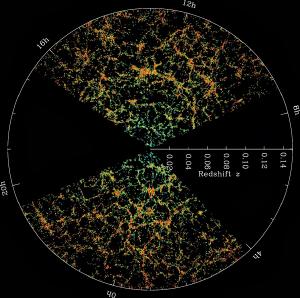Post
Sound It Out
18 September 2013
Imagine a stadium filled with people. With everyone is in their seats, waiting for the game to begin, there is an undercurrent of noise. A few words between friends, the scuffle of shoes, the creak of a chair. All of these little sounds fill the stadium with a background of white noise.
Sound is a vibration in air. As objects vibrate, they create variations in air pressure, and these variations then propagate through the air as waves of sound. If we could see these sound waves, they would look like ripples moving through air molecules. These ripples cause the air molecules to be bunched together a bit in some regions (higher pressure), and spread apart more in others (lower pressure). All the sounds create these ripples, and all these sound ripples overlap. As a result, all the small noises in the stadium create a seemingly random variation of clustered air molecules.
But these variations are not entirely random. Since each sound wave spreads outward at the speed of sound (about 330 m/s), the size of these ripples are all very similar. If speed of sound were faster, the ripples would be more spread out, and if the speed of sound were slower they would be closer together. Thus, the scale of sound ripples in the stadium is determined by the speed of sound. If we could see the ripples in the stadium, we could use the scale of these ripples to deduce the speed of sound in the stadium.
In astrophysics a method similar to this is used, and it is extremely important to our understanding of dark energy. It is known as baryon acoustic oscillation (BAO).
From our position in the universe, we see a vast sea of galaxies in every direction, with the glow of the cosmic microwave background coming from the distant edge of the visible universe. This is not because the universe is an enclosed bubble, but because the more distant the source of light, the younger the universe was when the light began its journey. Still, this view is similar to the stadium, with the galaxies like air molecules and the stadium seats marking the oldest and most distant region of the visible universe.
Just as the spectators in the stadium create a background of noise, the early universe was filled with acoustic fluctuations. As the universe expanded, those variations worked to clump some matter together, while pushing away other matter. As the galaxies formed, the effect of those early ripples can be seen in the clumping of galaxies, just as the sound ripples produce a clumping of air molecules.
 SDSS
SDSSJust as the scale of sound ripples is determined by the speed of sound, the scale of the cosmic ripples is determined by the rate of cosmic expansion. This means we can look at the scale at which galaxies clump together and determine the rate at which the universe has expanded. If the universe had expanded at a greater rate, the clumps would be more spread apart, and if the universe had expanded more slowly, the clumps would be closer together. This is important for our understanding of dark energy because it provides another way to determine just how much dark energy there is in the universe.
The first evidence for dark energy came from the comparison of the distance of galaxies with their redshift (a measure of how fast they move away from us). We found that the universe is not only expanding, but is accelerating due to dark energy. Another dark energy measurement can be seen in variations of the cosmic microwave background temperature. These variations put dark energy at about 68.3% of the universe.
With the baryon acoustic oscillations, we now have another way to accurately determine the amount of dark energy. Here we can use the redshifts of galaxies, and determine the scale at which galaxies tend to clump. For an accurate measurement we must make as large a survey of galaxies as possible, stretching out billions of light years. At present the largest such sky survey is the Sloan Digital Sky Survey (SDSS), the result of which can be seen in the figure above. From this survey, the present scale for clumping (known as the standard ruler) is about 490 million light years. This puts dark energy at about 69.2% of the universe.
Even though we don’t fully understand dark energy, we do see its effect, and we see it in multiple ways, including its effect on the sounds of the cosmic stadium.